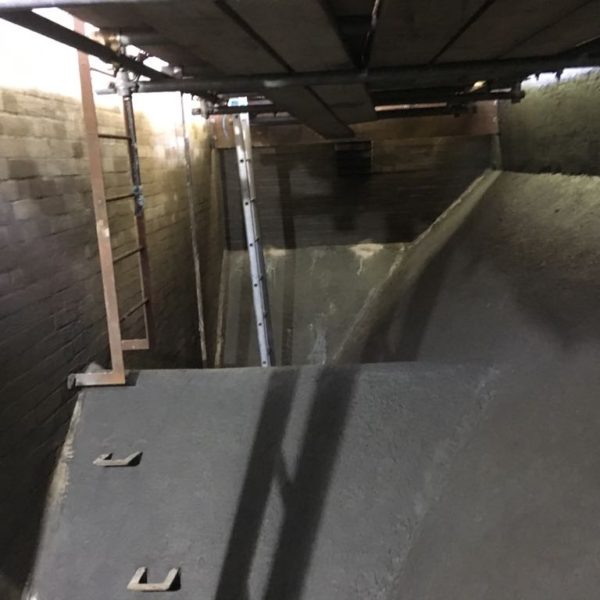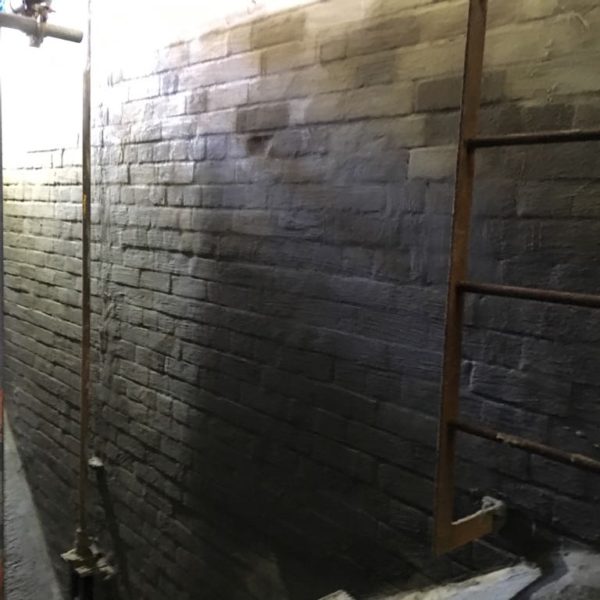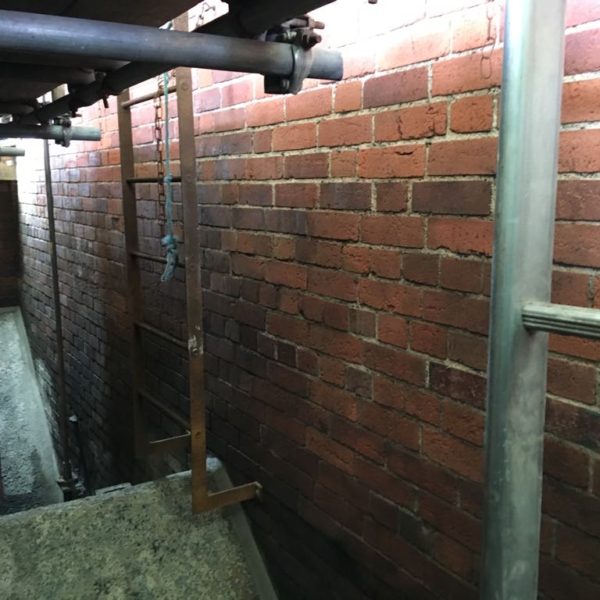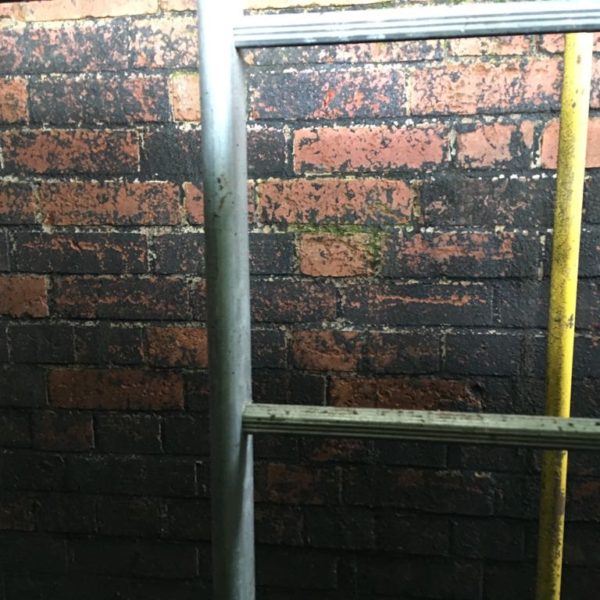THE PROBLEM
The brick and concrete primary settlement tanks required a new tank lining as they were leaking effluent into the surrounding soil.
SOLUTION
We proposed the application of a spray applied polyurea coating to form a seamless and fluid tight tank lining. Following draining and cleaning of the tanks by the client we supplied and supervised the installation of suitable scaffold access.
The tank internals were then prepared by method of abrasive blasting to ensure excellent adhesion of the new polyurea lining.
Providing a suitable surface for the polyurea tank lining
Once prepared and cleaned a cementitious fairing coat was applied to the tank walls to fill imperfections in the substrate to provide a suitable surface for the tank lining. When applying polyurea tank linings removing imperfections such as missing pointing is essential to aid the effective application of the new lining.
The concrete tank was then double primed using a damp tolerant epoxy primer to fully seal the substrate prior to the application of the tank lining. We always double prime on concrete substrates to ensure that the concrete is fully sealed, as the heat created during the initial reaction between the two components of the polyurea can lead to outgassing and the creation of pin holes if the substrate is not full sealed.
VIP Quickspray 2K Pure polyurea was then spray applied to a thickness of 2mm throughout the concrete tank. The polyurea tank lining was terminated in an anchor rebate above the waterline which was subsequently filled using a polyurethane jointing compound as per best practice.
Testing the tank
Finally the tank lining was tested for porosity using a DC holiday spark tester and where found touched in using the same material.
The new polyurea tank lining has an expected service life in excess of 20 years, meaning that integrity of the tank should be assured for the foreseeable future.





